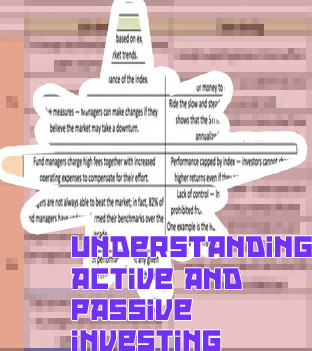Passive vs active investing
Critics of passive investing say funds that simply track an index will always underperform the market when costs are taken into account. In contrast, active managers can potentially deliver market-beating returns by carefully choosing the stocks they hold. Active investment strategy Business Solutions including all features.Passive investing for beginners
Index (tracker) funds have been around for over 45 years and are offered by a range of investment companies. But where did passive investing first begin and how does it work? The benefits of passive investing Should the vehicles that investors choose to place their money be a function of the investing environment? This question is not asked often enough by investment committees, which tend to focus on asset allocation issues, model portfolios and manager selection.

A New Take on the Active vs. Passive Investing Debate
The resulting large-scale demand shift to passive investing generated two supply-side reactions. First, more asset managers entered the space, increasing price competition and dramatically driving down fees. Second, some managers extended the offering of index-based passive approaches to much less liquid and higher risk segments of markets that are more subject to dislocations and default risk. When should I invest? Gen Zers might be getting their investing knowledge from Reddit and TikTok these days, but the value of a good old-fashioned book endures. Many of these books were written with retail investors in mind, with step-by-step instructions on many things new investors find daunting, like how to screen funds, how to build a portfolio, how to maximize tax efficiency and so on.Investing in passive index funds
Investing in stocks always involves risk. While you can make money by investing in stocks, bonds, funds, and other securities, you can also lose money, especially if your investments lose value. By diversifying and doing careful research before you purchase securities, you can reduce your risk. For Advertisers Lower fees: Passive investing doesn’t require as much buying and selling as active investing, which can mean lower expense ratios — the percentage of your investment that you pay the fund. “I’ve seen anywhere from 1.5 to 1.25% in fees for a fund that we can replicate in an ETF for 0.2%, and so that’s a drag on the return of the investment for the investor,” says Dorsainvil.



